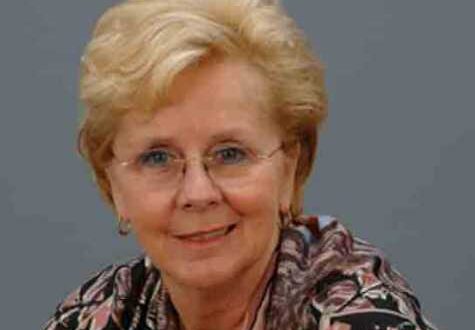SCRS Offers Free 401(k) Plan Analysis to Collision Repair Industry Businesses Through Virginia Asset Management

The Society of Collision Repair Specialists (SCRS) reiterated it is offering free retirement savings plan consultations to collision repair industry businesses in partnership with Virginia Asset Management, during a Feb. 26 webinar entitled “SCRS 401(k) Plan: Everything You Need to Know about Switching from an Existing Plan.”
“SCRS is really excited to share information about our Multiple Employer Retirement Plan (MEP), a customized 401(k) plan solution created specifically for SCRS members,” said SCRS Executive Director Aaron Schulenburg.
“Our goal is to increase retirement savings for industry professionals.”
Schulenburg encouraged collision repair industry businesses to take advantage of this opportunity.
“There’s no fee for the one-on-one conversations with SCRS’s financial advisors to evaluate whether the MEP is best for your business needs,” he said.
Schulenberg said the plan is meant for affiliate members as well as shops, and the consultations are open to non-members too, though they will need to join SCRS before signing onto the plan.
“We’ve seen members save thousands of dollars in a year, so it’s easy to justify the $475 annual membership fee,” Schulenberg said.
“We know this plan is going to be a great value-added benefit to the businesses we serve.”
Schulenburg introduced Scott S. Broaddus, CFP, AIF, and Coley Eckenrode, partners at Virginia Asset Management, whose goal is to help people interested in the MEP explore their options to determine what’s best for their businesses.
“Retirement savings is challenging for small business owners,” Broaddus said.
He said of the 57 million Americans who have no access to a retirement plan through their employers, more than half work in a small business.
“SCRS and the U. S. as a whole are looking at this lack of retirement savings,” Broaddus said.
The most common concerns and barriers that small business owners face is high cost, complexity, uncertainty about where to obtain the information needed to make a decision, and making time to prioritize implementing a retirement plan while maintaining focus on the day-to-day operations in their shop or company.
Unfortunately, employees rely heavily on employers to help them save for retirement.
When workers over 30 years old with access to a work retirement plan were questioned, 89% said they would not have saved without it.
An AARP study indicated employees are 15 times more likely to save for retirement if employers offer a plan, and less than 10% of employees without access to a work plan save for retirement on their own.
“It’s great that you’re part of a group offering a retirement plan,” Broaddus said. “Offering this benefit to employees is just the first step, though. The government is trying to incentivize employees to start saving their own money through opt-out plans instead of opt-in. Legislation is expanding to address this savings gap.”
As of January, more than 30 states have passed or are working on legislation requiring small businesses to offer basic retirement savings programs.
If employers don’t offer a retirement savings, employees are automatically opted into the state plan, but “it’s rigid and limited, and many people want customizable options,” Broaddus noted.
“We need to maximize the fact that we’re in a low unemployment environment and offer plans to attract and retain the best employees who will help make your business its most profitable,” he said.
Discussing the SECURE Act, Broaddus explained it increases the current flat $500 tax credit for employers establishing their first retirement plan up to $250 per non-HCE employee, up to a total of $5,000, applicable for the first three years of the plan.
Small employers who add automatic enrollment to their plans may be eligible for an additional $500 tax credit per year up to three years.
“The government is incentivizing business to establish retirement plans for their employees and encouraging them to automatically enroll employees in the program as a way to increase the savings rate in the U.S.,” Broaddus said.
The SECURE Act also raises the deferral cap for auto-enrollment safe harbor from 10% to 15%, offers up to $5,000 penalty-free withdrawals per child in the event of a qualified birth or adoption, and allows account owners who attain age 70.5 years after Dec. 31, 2019, to refrain from taking required minimum distributions until they are 72 years old.
With all this focus on encouraging people to save money for retirement, Broaddus said, “If you don’t set up your own plan, they’ll set up a plan for you.
“We want to make sure you have access to a plan of your own, and that’s why the SCRS created its MEP,” he said. “It acts like a 401(k), but in the eyes of the Department of Labor, the association is the employer, and then all the members are electing to use the benefit program.
“Aaron and his team have done a great job of interviewing vendors and setting up a plan that is professionally managed and overseen so shops using it get the power of the association in terms of pricing and the services received,” Broaddus said.
Each individual business can customize the plan to fit its needs, and options available include employer matching, eligibility period, vesting schedule, safe harbor, Roth deferrals, loans, profit sharing and more.
“Our goal was to offer a customized plan, not a rigid plan,” Broaddus said. “The way each business uses the plan will be different, allowing them to maximize their potential and attract new talent. We’ll help you evaluate your needs to recommend what’s best for your business.”
Broaddus said his team will handle each business’ retirement plan so the owner can focus on running the day-to-day business.
“You enjoy lots of flexibility, worry-free,” Broaddus said. “We’ll schedule an individual session with collision repair industry professionals to give them specific investment advice.”
Broaddus then provided examples of the cost savings enjoyed by some members of the MEP.
In order to request a complimentary cost analysis of a current 401(k) plan in comparison to the SCRS MEP, industry business owners will need to provide a list of plan investments and balance, as well as their 408(b)2 annual plan expense statement.
“We’ll tell you if it’s perfect and doesn’t make sense for you to move, or we’ll explain how the MEP can save you money,” Broaddus said. “Over average, most folks who’ve moved have saved 18 to 25%.”
Broaddus provide a breakdown of the steps for changing 401(k) providers for those who decide to proceed with the conversion, a process that takes approximately 60 days.
“We are also here to assist if your business is ever audited,” he said.
Broaddus said audits can range from $8,000 to $15,000 a year for a business, but since SCRS is considered one employer by the Department of Labor, there will only be one audit for the entire plan, instead of one for each shop.
“There will be a pro-rata share of the audit under the plan since we’re pooling funds to be considered one employer for audit purposes,” he said.
After explaining how the plan fees can be paid, Broaddus ended by reminding attendees: “We’re here to bounce ideas off of, so please contact us—we’re happy to help in any way possible.”
For readers who missed the live webinar, it can be watched on-demand at https://scrs.com/scrs-webinar-401k-everything-you-need-to-know-about-switching-from-an-existing-plan/.
Collision repair industry businesses can request a free analysis of their 401(k) plan at scrsbenefitscenter.com
SCRS will host its next MEP webinar on Tuesday, March 17, for businesses interested in starting a brand-new retirement plan with SCRS.
To register for that webinar, visit https://zoom.us/webinar/register/WN_hrYvdAb8TreFefI4SrNKqQ
For more information on SCRS, its webinars or joining the association, visit scrs.com.


